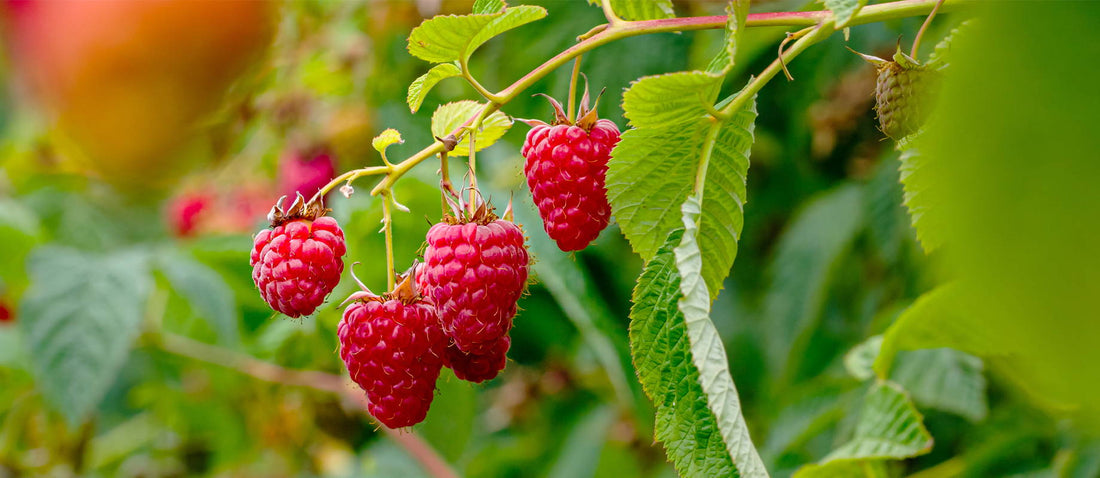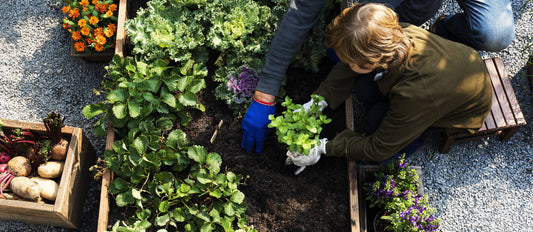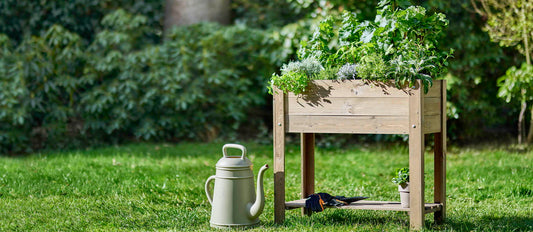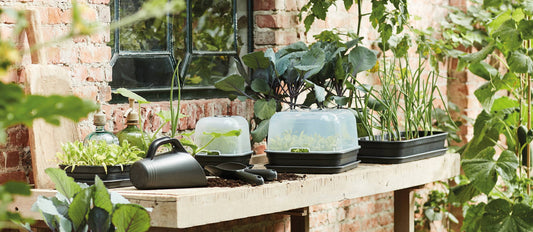Raspberries, those velvety pink fruits with an extraordinary aroma, are regarded by many as a delicacy of bygone days. If you can find them in the shops at all they are very pricey. So why not plant some shrubs in your own garden? You don't need a vegetable plot to grow them. Just plant some of these woody fruit bushes in the border or in tubs on the patio or balcony for your very own crop.
Origins
Raspberries grow wild all over Europe and have been commercially cultivated in the Mediterranean, particularly in Greece and Italy, since as early as the 16th century. At the end of the 19th century over 400 varieties were known. These old varieties however have now completely disappeared and been replaced by varieties that are less susceptible to pests and diseases.
Requirements for a good crop
- In the forest Raspberries are part of the 'undergrowth' which means they prefer light shade and shelter and slightly acidic, moist, but well-drained soil. A little loam in the soil is very much appreciated.
- The best time for planting is September or October or early spring.
- If you want to use the shrubs as a hedge they should be planted about 40 to 60 cm apart. You can support or train the shoots with wire. A north-south planted hedge gets the best, most evenly distributed sunlight.
- A single Raspberry plant in the border or in a tub can do with a bit more space.
- After planting cut back the woody branches to about 50 cm. This way the shrub will not sway too much in the wind and will produce shoots on the roots. When the new shoots are about 20 to 25 cm, cut back the old ones to the ground. In hedges, tie these new shoots loosely to the supporting wires.
- Summer flowering Raspberries like 'Himbo-Star' will produce berries on last year's wood. Autumn flowering Raspberries like 'Zeva' will produce fruits on this year's growth.
Pruning summer Raspberries
- To prevent older shrubs from becoming too bushy, remove excess young shoots in June. Keep the thickest of the new shoots as these carry the most fruits. After the harvest, around mid-July, the fruit bearing branches will start to die back. This is a good time to remove them. It will help the new shoots get sufficient light too.
- Around mid-August, tie up about eight of the strong new shoots, some 10 cm apart. Shoots that develop too far away from the shrub should be removed
Pruning autumn Raspberries
- Autumn varieties bear fruit on the new shoots that have formed in the same season.
- These plants are annuals, but behave as perennials and die back in winter.
- Around December, after the harvest and after the leaves have fallen, cut back branches to the ground. In spring, the new shoots can be thinned slightly, if necessary. This keeps the shrub airy and healthy.
- In Raspberry hedges, tie the supple new shoots to the supporting wires at 10 cm intervals. If there are more then 10 new shoots per metre, they can be removed as soon as they are clearly visible. Shoots that develop outside the hedge can also be removed.
All Raspberries like undergrowth that fixes nitrogen to the soil. Calendula is very suitable for this purpose. Never fork over the soil around Raspberries, as this would permanently damage the roots.
Harvest
Summer Raspberries ripen, depending on spring temperatures, in July and August. When the berries are a lovely deep pink they can be picked. If intend to place the fruits in a basket or other container, always retain a little stalk when you remove them. In this way, the berries at the bottom of your basket will not get crushed. The stalk can be removed just before it is eaten.
Tip: When you harvest your fruits, remember to remove some of the foliage too. With the dried leaves of blackberry and strawberry, it will make a delicious fruit tea.
Tip: If your Raspberry bush provides you with so many fruits at one time that you don't know what to do with them, try making tasty Raspberry jam. Alternatively you can freeze and store them in small containers to give yourself another taste of summer long after it is over.




